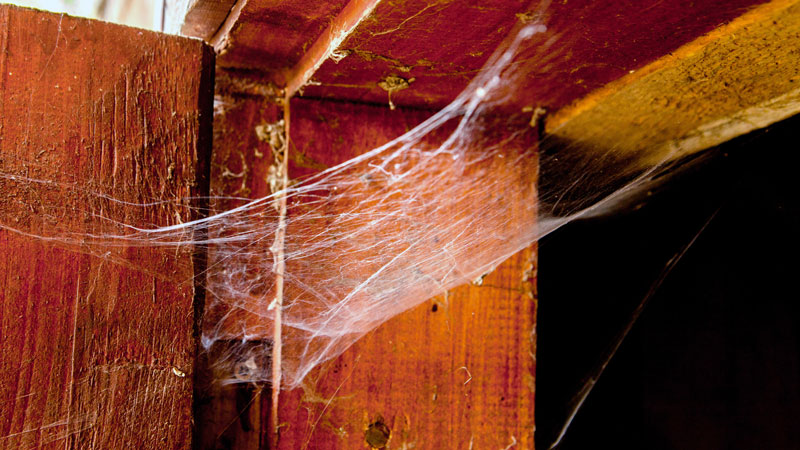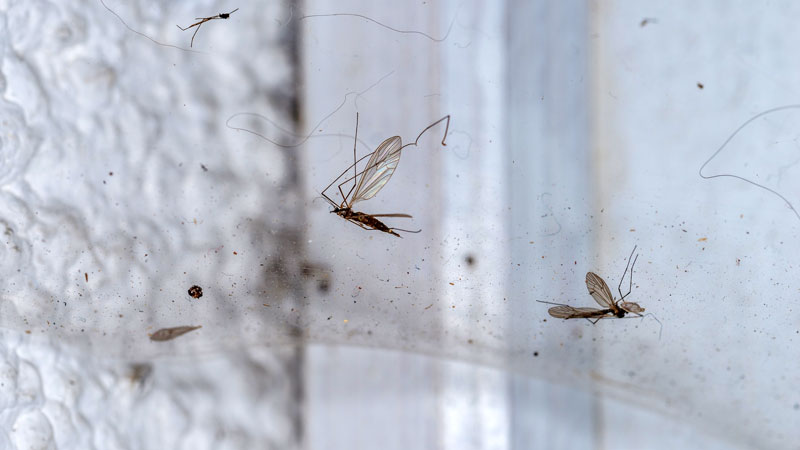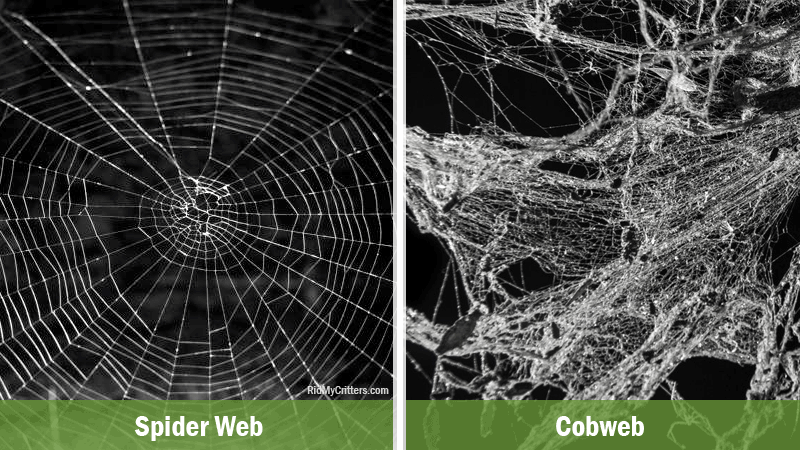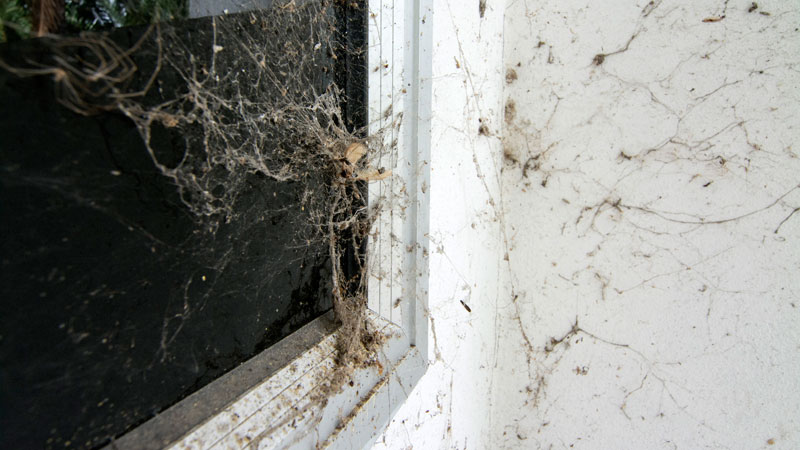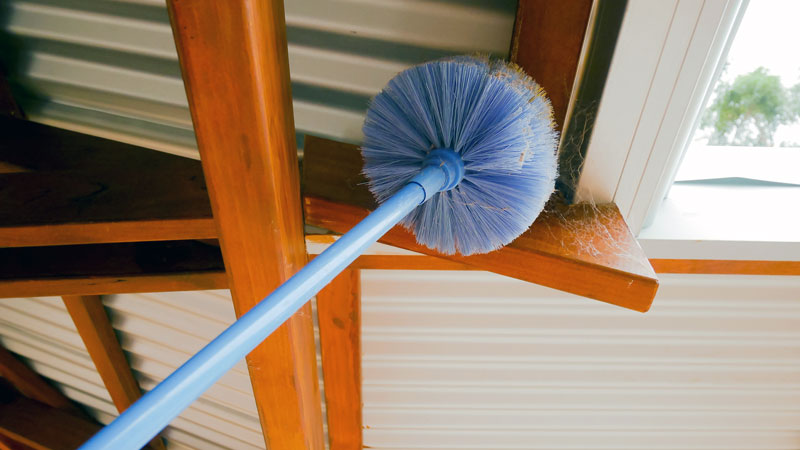It can happen for any number of reasons. Perhaps you’ve been busy and haven’t had a chance to clean. Or perhaps an arachnid snuck into the room and set up home. Whatever the reason, you now have webs decorating bits of furniture or ceiling corners.
Getting rid of a spider web can be easier than you think, and it may have some unseen benefits as well.
Some Notes About Webs
There are a few things to keep in mind when you see a web. It’s true that they can be a sign of poor cleaning habits. This is because common house spiders prefer to build webs in relatively undisturbed locations, such as dark corners. But even a regular cleaning schedule won’t prevent the occasional spider web.
Webs can be a sign that you have access points around your home. A poorly caulked window sill, damaged window screens, and other gaps in your home’s defenses can let spiders in.
But most importantly, looking at a web closely will reveal any captured prey, which in turn can warn you of an insect infestation. Remember, spiders aren’t dropping by to take a few photos and buy souvenirs. They’re here because of available food sources.
Why Should You Remove Webs?
We’re guessing you already know that webs make a house look unkempt. But there are other reasons you should get rid of spider webs when you see them.
Allergies are one good example, as webs will collect dust and allergen particles over time. Spider egg sacs are often laid in or near webs (depending on the species), posing a big risk for those allergic to spider bites. Those spider eggs can also lead to a spider infestation, sometimes even during the winter.
For people with arachnophobia (a fear of spiders), the sight of a web can induce panic until it’s removed.
Removing webs can also encourage web-making species to move along. Spiders produce a limited supply of silk and need time to recharge before they can replace a destroyed web. No web, no food, no reason to stay.
Related: How to Locate a Spider In Your Room
Webs on Plants Might be Mites
Spider mites are a common pest on plants that can create webbing. These arachnids aren’t actual spiders, so you’ll need to use different methods to take care of these critters. Neem oil and miticides work best. Just be careful not to harm your plants in the process.
Spider Web vs Cobweb (What’s the Difference?)
Contrary to popular belief, cobwebs are very different from spider webs. The term “cobweb” is commonly used in reference to an old, abandoned, dusty spider web. In reality, this usage is usually referring to spider webs, not actual cobweb. The same goes for changing the name based on whether the web is occupied.
In a more precise definition, cobwebs are produced exclusively by spiders in the Linyphiidae and Theridiidae families, and have a different silk composition than that of other spiders. The name itself is derived from the Old English word for spider, atorcoppe.
Cobwebs are easy to spot because they resemble a tangled mass of netting made after Ms. Spider had one too many.
More importantly, cobweb has many valuable qualities. Spider silk was commonly used in the Alps to make fabrics for painting throughout the 16th century. It’s also chock full of antifungal and antiseptic goodness, as well as vitamin K, making it a popular folk remedy in first aid to this day.
Conversely, spider webs can be made by most other web-spinning spider families. They’re well-designed and will be a flat net, funnel, or similar structure designed to protect egg sacs or capture prey.
Spider webs have similar medicinal qualities, but some care must be taken to ensure the web doesn’t isn’t inhabited by a black widow spider or similar dangerous species.
Getting Rid of Spider Webs and Cobwebs
There are a lot of methods out there to remove webs, such as using bleach water. However, these can often be quite impractical or even damage your furniture or wallpaper. The following methods are generally safe and effective for around the home and even outside.
Start with the Spider
Unless you’re sure the web is abandoned, you should first identify the spider. In some cases, you may also wish to evict it before attacking the web. This will prevent some nasty bites if you accidentally get too close to the web.
One great option is a natural spider repellent spray using essential oils. Eucalyptus oil, peppermint oil, and tea tree oil are all popular options. To use, simply add a few drops into a spray bottle with some water. A few drops of Dawn dish soap can help make the spray stick.
Mist the web to chase the spider off. Just be warned that essential oils can be dangerous to pets. Don’t use them near a cat or on a web you plan to harvest.
Suck It Up
Vacuum cleaners are the quickest and safest method out there, especially if you’re in an area that has black widows or brown recluse spiders. A good shop vacuum (ie: Shop-Vac or Vacmaster) will make quick work of removing spider webs or cobwebs.
You can also use your regular indoor vacuum with a wand extension or a handheld model such as Shark or Black+Decker.
Not only can you suck up the webs, but also any spiders or egg sacs present. The wand and edger attachments allow you to safely get into tight spaces, around window and door frames, and under furniture.
Dispose of the bag or carefully empty the container into a sealed bag to avoid letting any surviving spiders escape.
Dust Them Out
Using a broom or duster to take on webs is a tried-and-true solution. You will want to clean the webbing off afterwards, preferably wearing gloves to avoid any surprise bites.
Roll It Up
Highly textured surfaces such as popcorn ceilings can be hard to clean without damaging them, but a simple lint roller will get the job done without any risk to paint or fragile materials.
See Also: Getting Rid of Hobo Spiders
Spray and Pray
This trick works best outside for obvious reasons. Grab a water hose and send a solid stream at the webs on siding or in other hard to reach places. Not only will you get rid of the webs, you’ll also get your house nice and clean.
Be careful not to get any light fixtures wet, as not all porch lights are designed to stand up to the pressure of a hose.
Bonus Tip: Harvesting Webs
Due to the medicinal properties of fresh cobweb and spider web, you may wish to collect the web rather than destroy it. To do this, you will want to scare away any spiders and ensure the webbing is fresh (i.e. no caught bugs or dust).
Using a meat skewer or a gloved finger, gently run along the edges of the web to detach it. Twirling the skewer slowly works especially well.
Once collected, roll the webbing into a ball and store it in an airtight container inside your first aid kit. The web can be used to pack wounds and will help form scabs as long as it’s touching the edges of the wound.
Cover the packed web with a bandage to hold it in. Webs won’t cause a reaction, and can be safely absorbed or removed once the wound is healing.
Please note that you should avoid collecting webs made by venomous spiders and should never attempt traditional medicine if you’re unsure how to use it safely.
- How to Get Rid of Hawks - March 8, 2024
- How to Get Rid of Pill Bugs (Rolly Pollies) - March 1, 2024
- How to Get Rid of Groundhogs (Woodchucks) - February 5, 2024

